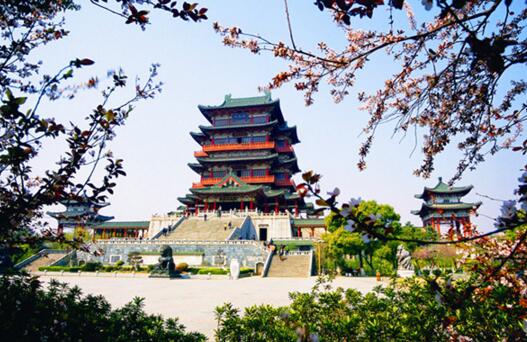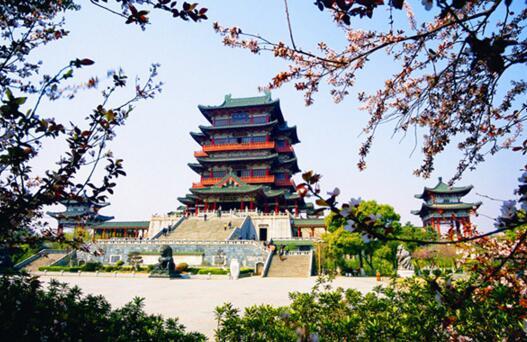
To become a service-oriented government, Jiangxi has vigorously proceeded with the reform of government agencies, transformed government functions, and made an unprecedented effort to streamline administration and institute decentralization.
Promotion Policies
In recent years, with unprecedented reform efforts, Jiangxi CPC Committee and Provincial Government have formulated more than ten policies aiming to promote upgrading the opening-up of Jiangxi, and especially in 2016, formulated and introduced "2+N" documents concerning the open development of the whole of Jiangxi, namely, Opinions on In-depth Application of New Philosophies of Open Development and Formation of New Pattern of All-round Opening Up (Gan Fa [2016] No. 10) and Circular Concerning Distribution of Jiangxi's 13th Five-year Plan for Open Economy Development (Gan Fu Ting Fa [2016] No. 82), the sub-documents Opinions on Accelerating Implementation of the Going-out Strategy (Gan Fu Ting Fa [2016] No. 28), Implementation Opinions on Improving Quality and Efficiency of Investment Promotion (Gan Fu Ting Fa [2016] No. 29) and Implementation Opinions on Opening up Wider and Building New Advantages in Investment Promotion (Gan Fu Ting Fa [2017] No. 20). This top-level design aims to establish a new open economy system with Jiangxi’s characteristics and upgrades the status of opening-up in Jiangxi's economic and social development to a new level.
Traffic and Transportation
Railway: Jiangxi boasts a railway network leading to all directions and China Railway Nanchang Bureau is one of the most important railway authorities in China, having jurisdiction over railways in Fujian and Jiangxi. Railway mileage in use adds up to 4,137 km, the Jiangxi section of Shanghai-Yunnan Railway, Wuhan-Jiujiang passenger line and Jiujiang-Jingdezhen-Quzhou Railway have been officially put into operation, the construction of Beijing-Fuzhou, Nanchang-Ji’an-Ganzhou and Hefei-Jiujiang kicked off one after another, contributing to the leaping-forward development of Jiangxi railway.
Highway: The road mileage in Jiangxi adds up to 162,000 km, among which the national highways stretch7,860 km and highways 5,916 km, fulfilling the goal of highways leading to all local counties and high-graded roads leading to all local villages in Jiangxi. There are fast passages which take 4 hours to drive from the provincial capital to local cities and 6 to 8 hours to neighboring provincial capitals, the 6-hour economic circle covering a population of 440 million.
Airway: There are now in Jiangxi 7 airports, namely, Nanchang Changbei Airport, Ganzhou Huangjin Airport, Jingdezhen Luojia Airport, Ji'an Jinggangshan Airport, Jiujiang Lushan Airport, Yichun Mingyueshan Airport and Shangrao Sanqingshan Airport. Over 70 domestic flight routes and 6 overseas routes have been put into service, linking up to 54 cities. The local airline Jiangxi Air has been established, arrival visa are supported in Nanchang airport and visa offices have been set up in Nanchang Changbei Airport.
Waterway: Jiangxi's waterway mileage open to traffic has reached over 5,000 kilometers. There are over 1,700 quay berths for productive use in inland ports. There are 57 ports with an annual throughput of 10,000 tons, and 32 ports with an annual throughput of over 1 million tons. A group of large, medium and small-sized ports connected internally and externally has been formed basically. Jiujiang Port passed national inspection for expanded opening and was included in the pilot of port of departure tax rebate policy. Nanchang International Container Terminal and Jiujiang Chengxi Harbor open to the world's major ports, available for 3,000 tons and 10,000 tons container ships to berth respectively, and regular cargo ships from Nanchang to Shanghai Waigaoqiao, from Jiujiang to Shanghai Waigaoqiao and Yangshan Port are available.
Market Capacity
The per capita income of urban and rural residents in Jiangxi has risen steadily for several consecutive years, and their consumption capacity is increased continuously, so the market space is very broad. In 2017, the per capita disposable income of urban residents in Jiangxi was RMB 31,198, up by 8.8%; the per capita disposable income of rural residents was RMB 13,242, up by 9.1%. The per capita consumption of urban residents was RMB 19,244, up by 8.8%; the per capita consumption of rural residents was RMB 9,870, up by 8.1%; the Engel coefficients for urban and rural residents were 31.1% and 33.6%, down by 0.9 and 1.7 percentage points from the previous year.
Energy Guarantee
Jiangxi's coal, power, oil and gas are sufficient in supply and energy guarantee capacity is remarkably increased. By the end of 2017, the installed capacity of power plants in Jiangxi hit 31.6696 million kw, among which 1.6882 million kw came from wind power plants and 4.494 million kw came from solar energy power plants, 2.2121 million kw higher than the previous year. The 500 kv main grids formed a large ring grid with a line length of 4,000 kilometers; natural gas long-distance pipeline has a length of over 2,600 kilometers, forming a gas supply pattern of national cross network and provincial network around Poyang Lake. About 90% counties (cities and districts) use natural gas, 50% counties (cities and districts) use long-distance pipeline natural gas; the coal annual capacity is about 28 million tons; petroleum products pipeline 263 kilometers and the annual processing capacity of petroleum products is about 5 million tons.
Educational Resources
Jiangxi has 103 colleges and universities from which over 250,000 students graduate every year. The pace of Jiangxi's innovation-driven development is accelerating. Products "created in Jiangxi" stand out conspicuously. 70,591 patent applications were accepted and 33,029 patents were granted in 2017.
(Source: Department of Commerce of Jiangxi Province)




 A single purchase
A single purchase









